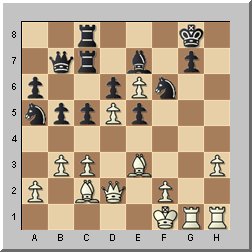Chess Metaphors –
Artificial Intelligence and the Human Mind
By Diego Rasskin-Gutman
Translated by Deborah Klosky
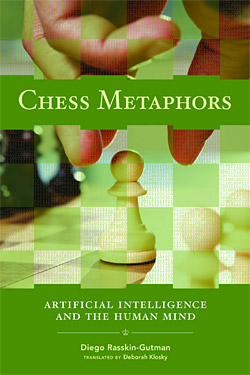
How the moves of thirty-two chess pieces over sixty-four squares can help us understand the workings of the mind.
When we play the ancient and noble game of chess, we grapple with ideas about honesty, deceitfulness, bravery, fear, aggression, beauty, and creativity, which echo (or allow us to depart from) the attitudes we take in our daily lives. Chess is an activity in which we deploy almost all our available cognitive resources; therefore, it makes an ideal laboratory for investigation into the workings of the mind. Indeed, research into artificial intelligence (AI) has used chess as a model for intelligent behavior since the 1950s.
In Chess Metaphors, Diego Rasskin-Gutman explores fundamental questions about memory, thought, emotion, consciousness, and other cognitive processes through the game of chess, using the moves of thirty-two pieces over sixty-four squares to map the structural and functional organization of the brain.
Rasskin-Gutman focuses on the cognitive task of problem solving, exploring it from the perspectives of both biology and AI. He examines concept after concept, move after move, delving into the varied mental mechanisms and the cognitive processes underlying the actions of playing chess. Bringing the game of chess into a larger framework, he analyzes its collateral influences that spread along the frontiers of games, art, and science. Finally, he investigates AI’s effort to program a computer that could beat a flesh-and-blood grandmaster (and win a world chess championship) and how the results fall short when compared to the truly creative nature of the human mind.
£18.95 in UK/Europe – $24.95 in USA and Rest of World
Cloth • 232 pp. • 58 illus. ISBN 978-0-262-18267-6 Published September 2009
About the Author
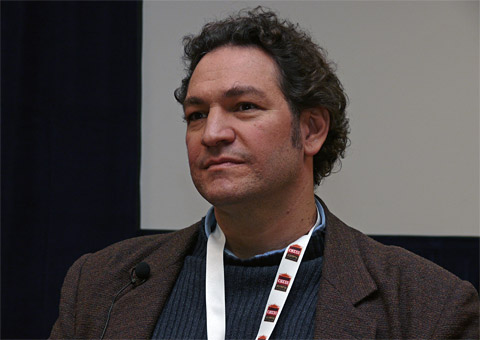
Diego Rasskin-Gutman is Ramón y Cajal Research Associate and Head of the Theoretical Biology Research Group at the Institute Cavanilles for Biodiversity and Evolutionary Biology, University of Valencia, Spain. He is the coeditor (with Werner Callebaut) of Modularity: Understanding the Development and Evolution of Natural Complex Systems (MIT Press, 2009).
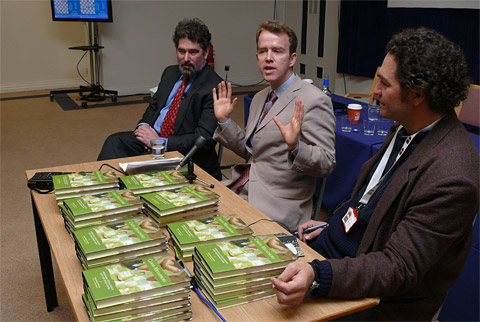
At a book presentation, hosted by GM Jonathan Rowson, during the London Chess Classic

The New York Review of Books (NYREV or NYRB) is a fortnightly magazine with articles on literature, culture and current affairs. It takes as its point of departure that the discussion of important books is itself an indispensable literary activity. The publication had a circulation of approximately 140,000. The Review has been noted for its unique style and point of view for the past 45 years. Esquire called it "the premier literary-intellectual magazine in the English language."
In Volume 57, Number 2 (February 11, 2010) of the NYRB we find Diego Rasskin-Gutman's book reviewed by someone who has great first-hand experience in dealing with the artificial intelligence of chess playing computers.
Garry Kasparov's review of Chess Metaphors is entitled "The Chess Master and the Computer". The article is a summary of Kasparov's own experience with chess machines and his matches against them. Rasskin's book is only occasionally mentioned. Actually this is in keeping with the NYRB platform. The Magazine doesn't really review books, it tries to get people from related fields to write on the topic covered in the book, or at least vaguely related.
Kasparov's review starts with the poignant tale of his first intensive encounter with chess computers:
In 1985, in Hamburg, I played against thirty-two different chess computers at the same time in what is known as a simultaneous exhibition. I walked from one machine to the next, making my moves over a period of more than five hours. The four leading chess computer manufacturers had sent their top models. ... It illustrates the state of computer chess at the time that it didn't come as much of a surprise when I achieved a perfect 32–0 score, winning every game. ... From the human perspective, or at least from my perspective, those were the good old days of man vs. machine chess.
Wait a minute, don't we have pictures from that event? It was staged by the German weekly news magazine Der Spiegel, and we (Frederic Friedel and colleagues) helped to organise it. Garry's going to be quite taken aback to see these faded shots from 25 years ago.
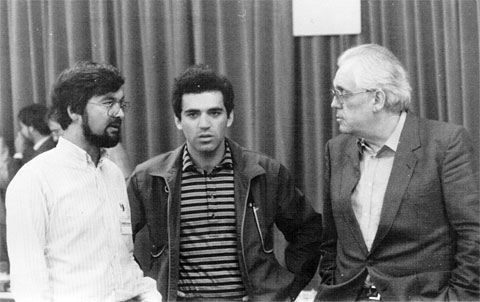
Frederic Friedel, Garry Kasparov, Werner Harenberg (senior editor of Der Spiegel)

Preparation before the start of the 32-board computer simul
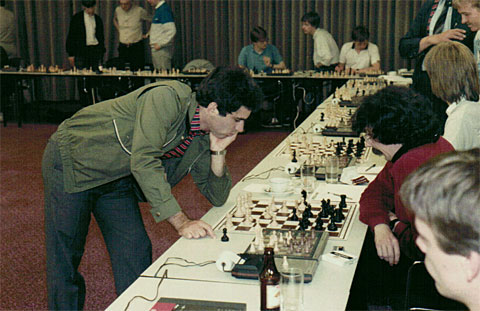
The computer operators had to execute a move when Garry appeared at the board

There was a lot of interest for the game – chess computers were new and exciting
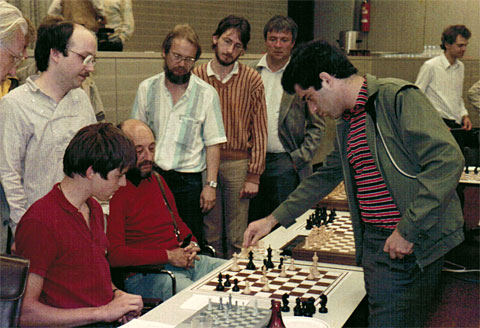
In the striped white-and-blue shirt is GM Helmut Pfleger, on the left with glasses
Dirk Frickenschmidt, a pastor who wrote a popular book on computer chess

On one board Garry had a problem, which he describes in his review:
At one point I realized that I was drifting into trouble in a game against one of the "Kasparov" brand models. If this machine scored a win or even a draw, people would be quick to say that I had thrown the game to get PR for the company, so I had to intensify my efforts. Eventually I found a way to trick the machine with a sacrifice it should have refused.
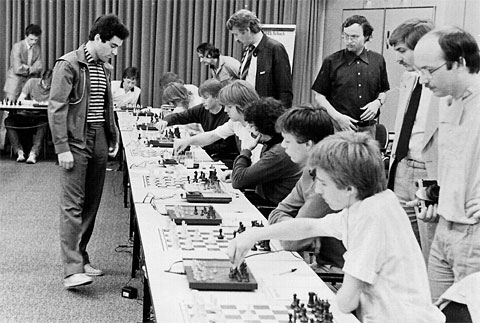
Our black-and-white archive photos have withstood the test of time better

Garry vs Mephisto: on the left with the desktop computer is programmer Richard Lang
(Mesphisto, Chess Genius), behind Kasparov in the middle is Ed Schroeder (Rebel)
In his review Kasparov leaves out one narrative that fascinated everyone who witnessed his adventures with chess machines in Hamburg, back in 1985. Garry was invited by a different weekly magazine, Die Zeit, to give a blindfold simultaneous exhibition against ten opponents. It was the young Kasparov's very first attempt at such a stunt. His opponents were strong club players, and one was a computer, the strongest Mephisto program by Richard Lang, running on a desktop computer.
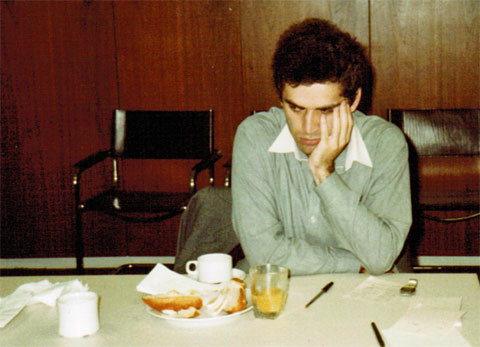
Garry came to the simultaneous exhibition without having had lunch, and needed sustenance during the games. The moves were brought to him on slips of paper, on which he jotted his reply. Here's his game against the computer:
Garry Kasparov - Mephisto [Computer] [C97]
Blind simultaneous exhibition Hamburg, 1985
1.e4 e5 2.Nf3 Nc6 3.Bb5 a6 4.Ba4 Nf6 5.0-0 Be7 6.Re1 b5 7.Bb3 d6 8.c3 0-0 9.h3 Na5 10.Bc2 c5 11.d4 Qc7 12.d5 Bd7 13.b3 Qb6 14.Nbd2 Rfc8 15.Nf1 h6 16.Be3 Qd8 17.Qd2 Nh7 18.Ng3 Rab8 19.Nf5 Bxf5 20.exf5 Nf6 21.g4 Nh7 22.Kg2 Rb7 23.Rh1 Nf6 24.Rag1 Qb6 25.Kf1 Rd7 26.g5 hxg5 27.Nxg5 Qb7 28.Ne6 fxe6 29.fxe6 Rdc7
At this point I was in a different room when suddenly organisers came looking for me: "There's a problem, Kasparov wants to speak with you." I rushed over and Garry said: "Where are you? Don't go away! I'm going to mate the computer." And mate he did, with a beautiful combination which you too will easily work out in your head.

Back to the NYRB review. Kasparov describes his encounters with the IBM supercomputer Deep Blue, which he defeated in 1996 and then lost to in 1997. That was considered a pivotal watershead event, comparable to Orville Wright's first flight or NASA's landing on the moon. Kasparov's hopes for a rematch were however dashed:
IBM had the publicity it wanted and quickly shut down the project. Other chess computing projects around the world also lost their sponsorship. Though I would have liked my chances in a rematch in 1998 if I were better prepared, it was clear then that computer superiority over humans in chess had always been just a matter of time.
During a recent visit in California we found Deep Blue, in the Computer History Museum in Mountain View. There is a section called " Mastering the Game – A History of Computer Chess" which, as the blurb tells us, "explores computing history's five-decade-long quest to build a computer that could challenge the best human chess players. Learn the basics of designing computer chess software, listen to computer chess pioneers and watch dramatic footage from the 1997 match between IBM's Deep Blue and World Chess Champion Garry Kasparov."
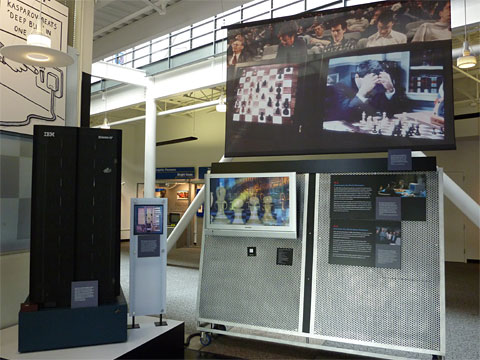
One part of the Computer Chess section is devoted to Deep Blue
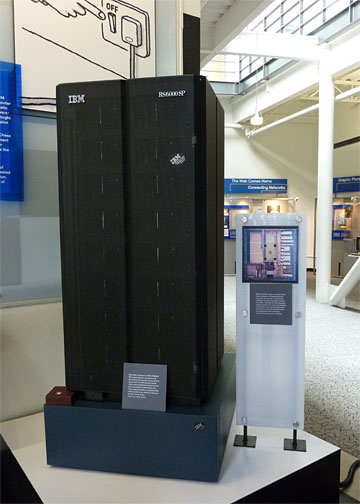
And this, standing on a little stage, is the machine Kasparov played and lost to in 1997
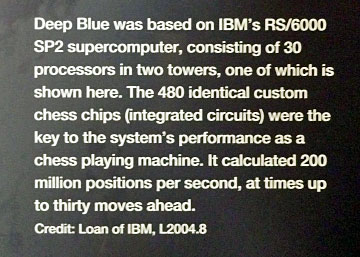
The sign in front of the exhibit describes the 1997 machine
"Today," Kasparov tells us, "for $50 you can buy a home PC program that will crush most grandmasters. In 2003, I played serious matches against two of these programs running on commercially available multiprocessor servers, and in both cases the score ended in a tie with a win apiece and several draws."

In January 2003 Kasparov played Deep Junior and drew the match 3-3
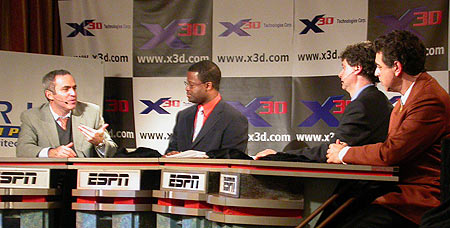
In November of the same year he played X3D Fritz with a final 2-2 score. The games were broadcast live on ESPN and afterwards Garry discussed them with Maurice Ashley, Paul Hoffman and Yasser Seirawan.
Kasparov continues in his review:
There have been many unintended consequences, both positive and negative, of the rapid proliferation of powerful chess software. Kids love computers and take to them naturally, so it's no surprise that the same is true of the combination of chess and computers. With the introduction of super-powerful software it became possible for a youngster to have a top-level opponent at home instead of need ing a professional trainer from an early age. Countries with little by way of chess tradition and few available coaches can now produce prodigies. I am in fact coaching one of them this year, nineteen-year-old Magnus Carlsen, from Norway, where relatively little chess is played.
The availability of millions of games at one's fingertips in a database is also making the game's best players younger and younger. Today's teens, and increasingly pre-teens, can accelerate this process by plugging into a digitized archive of chess information and making full use of the superiority of the young mind to retain it all. In the pre-computer era, teenage grandmasters were rarities and almost always destined to play for the world championship. Bobby Fischer's 1958 record of attaining the grandmaster title at fifteen was broken only in 1991. It has been broken twenty times since then, with the current record holder, Ukrainian Sergey Karjakin, having claimed the highest title at the nearly absurd age of twelve in 2002. Now twenty, Karjakin is among the world's best, but like most of his modern wunderkind peers he's no Fischer, who stood out head and shoulders above his peers—and soon enough above the rest of the chess world as well.
There is more to read and think about, and we expect to return to the subject again, especially to the section on Advanced and Freestyle chess, and to discuss some of the other ideas proposed in Rasskin's book and in Kasparov's review.
Solution to the Kasparov combination against Mephisto:
Here Kasparov, who was operating blindfold on ten boards, played: 30.Rxg7+!! Kxg7 31.Bh6+ Kh8 32.Bg7+ Kxg7 33.Qg5+ Kf8 34.Qh6+ Ke8 35.Bg6+ Kd8 36.Qh8+ 1-0. [Click to replay]
Frederic Friedel






























